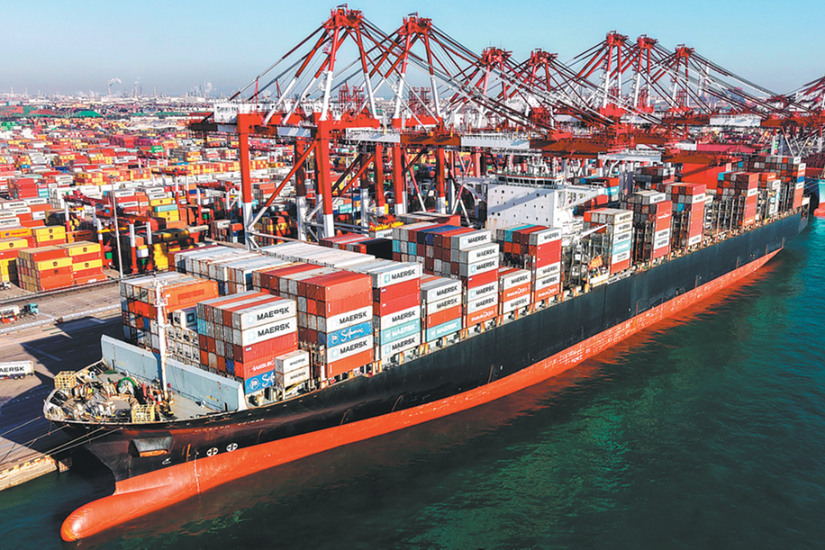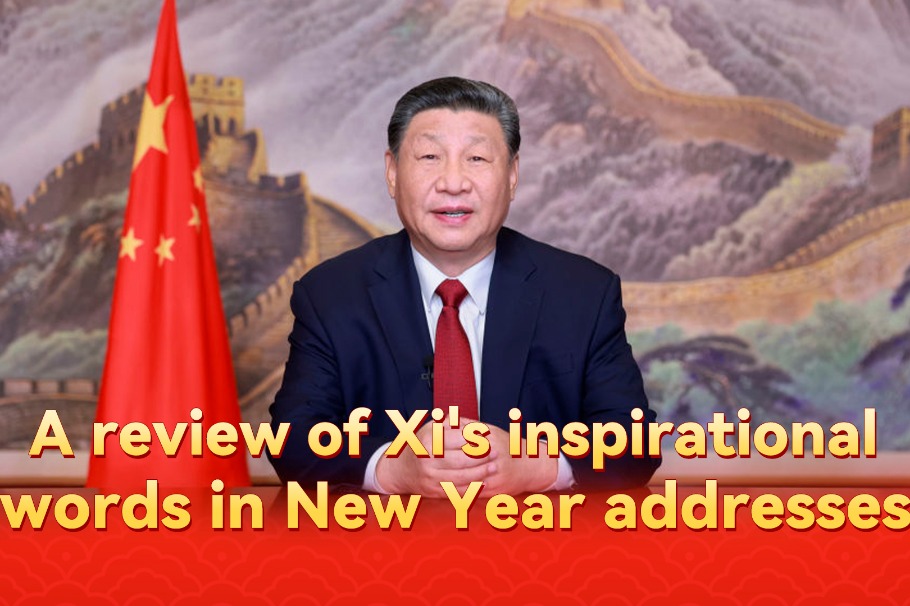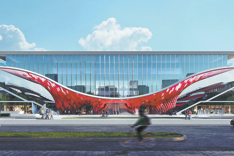Saudi Arabia eyes tourism transformation
Arab state highlights charming heritage sites through sustainable development

Saudi Arabia is teeming with unique experiences, from its charming heritage sites and sandy beaches, to its resort destinations, attracting solo travelers and families alike, not to mention its renowned holy sites for Muslim pilgrims and the vastness of its desert landscapes.
After welcoming a record 100 million tourists last year, thus surpassing its goals for Vision 2030, a grand economic diversification plan introduced by Saudi Crown Prince Mohammed bin Salman Al Saud in 2016, Chinese visitors and talents are poised to continue playing a significant role in the country's tourism development.
There were 140,000 Chinese visitors who came to Saudi Arabia last year, surpassing 2019 figures, which were at an estimated 111,000, according to Gloria Guevara Manzo, chief special adviser at the Ministry of Tourism Saudi Arabia, in an interview with China Daily in March.
When it launched its "Rethink Summer" campaign last year, the Saudi Tourism Authority invited Chinese holidaymakers to experience glamping in a Bedouin camp in AlUla and budget holidays in Jeddah, a major port in the central Hejaz region in western Saudi Arabia.
According to the UNESCO World Heritage Centre's website, Jeddah was, for centuries, "the most important, largest and richest among these settlements".
Today, it said, historic Jeddah "is the last surviving urban site along the Red Sea coast" that still preserves the ensemble of the attributes of this culture: commercial-based economy, multi-cultural environment, isolated outward-oriented houses, coral masonry construction, precious woodwork decorating the facades, and specific technical devices to aid internal ventilation.
Desert image
And contrary to its desert image, Saudi Arabia also has islands and beaches you can visit. About 40 kilometers, or about an hour's boat ride, from Jazan, one will find the Farasan Islands. According to the Visit Saudi website, more than 80 islands make up the archipelago.
Furthermore, since the first millennium BC, Jazan Province has been a draw for people from Arab states, Africa and Europe. The islands were once known as Portus Ferresanus, and a Latin inscription dating from 144 AD has been found on the island, indicating the existence of a Roman garrison.
Another growing popular destination is Umluj, famous for its shining blue waters and pristine white shores.
Umluj was once famous for the production of top-tier boats and fishing was a predominant indigenous activity, and a major source of income. It is often referred to as being "the Saudi Maldives".
"Saudi Arabia tourism has huge potential, which is even larger than what digital economy or finance can bring to it," said Jerry Li, founder and managing partner of eWTP Arabia Capital.
Li said the nation's tourism "has a unique charm, with all its cultures, museums and historical heritage places", as he found that the local places may be ordinary looking on the outside, but inside it "can be fabulous with all the luxuries including splendid halls and swimming pools".
Pan Xin, a tourist guide in the Middle East from Hong Kong, said there had been an increasing trend for Chinese tourists to go to Saudi Arabia after the China-Saudi Arabia Summit in late 2022.
Manzo, from Saudi Arabia and former president and CEO of the World Travel and Tourism Council, credits the leaders' vision, leadership and resources for developing the sector, which she said a lot of countries lacked.
"That's very important. The second fact is that the massive investment that we see is a little bit over $1 trillion when you combine infrastructure and tourism, but only half of that is going to NEOM, the rest is going to projects, is going to airport infrastructure, is going to the development of the sector," said Manzo.
"We have prioritized the sector … so that we can share with the world that we are open for business," she added.
She noted that sports and culture are helping them create products for tourism with their different activities and that she expected it was going to give "more than one percent to the GDP of the country".
In the years to come, there are a couple of new attractions that are expected to rise, making Saudi Arabia's revised target of 150 million tourists by 2030 possible to reach.
Diriyah Company is set to introduce its new visionary and lifestyle destination, Diriyah Square, which is located on the outskirts of the Saudi capital, Riyadh. The new retail hub will host over 400 new retail outlets and more than 100 restaurants and cafes at the heart of the historic Diriyah development area incorporating 300-year-old traditional architectural concepts and design.
Group CEO of Diriyah Company Jerry Inzerillo said Diriyah Square is more than just a shopping destination. It is a symbol of Saudi Arabia's commitment to driving economic growth and fostering creativity and innovation.
Another one is the mega luxury mountain tourism destination Soudah Peaks, which is in the first phase of development this year and is hoping for specialized Chinese firms to participate in the process, according to a senior executive.
Mountainous region
In September last year, Saudi Arabia's Crown Prince and Prime Minister Mohammed bin Salman Al Saud, who is also chairman of Soudah Development, unveiled a master plan that would transform the mountainous region of Soudah and parts of Rijal Almaa into Soudah Peaks. It is situated in the Aseer region in the southwest of Saudi Arabia.
Saleh Aloraini, chief executive officer at Soudah Development, told China Daily that the master plan will be developed over three phases. The first phase will have more than 900 hotel keys, 396 residential units, and 32,000 square meters of retail space.
"The development of the destination is expected to begin in 2024 with Phase 1 scheduled for completion in line with our timeline, which is when tourists can visit Soudah Peaks," Aloraini said.
Situated 3,015 meters above sea level, on the highest peak in Saudi Arabia, Soudah Peaks will offer an array of opportunities for potential investors and brands with a focus on various sectors such as ecotourism, entertainment, sports, wellness, and hospitality.
"Soudah Peaks presents a fertile ground for local and international brands to establish partnerships. The project will allocate over SAR 1 billion ($266.7 million) toward infrastructure development, ensuring a solid foundation for growth and success," Aloraini told China Daily.
Aloraini said that these ambitious plans "open up immense opportunities for potential investors and brands to be part of this visionary project".
"We also look forward to the prospect of collaborating with specialized Chinese companies as we continue to develop Soudah Peaks," said Aloraini.
"This demonstrates the strengthening of ties between Saudi Arabia and China, opening up opportunities for partnerships and mutual growth," he added.
In line with the goals of the Saudi Green Initiative, Soudah Development has undertaken initiatives to restore ecological balance with tree planting to facilitate the release of endangered wildlife, and rehabilitate local parks.
"We aim to contribute to creating a green and sustainable future that will benefit generations to come," said Aloraini.
Launched in 2021, the SGI is an ambitious national initiative for Saudi Arabia that aims to combat climate change, improve quality of life and protect the planet for future generations.
Under the SGI, Saudi Arabia has committed to growing 10 billion trees across the kingdom and rehabilitating 74.8 million hectares of land to restore Saudi Arabia's natural greenery.
"Recognizing the rich biodiversity and unique natural resources of the land, including over 200 documented heritage sites, Soudah Development is fully aware of the need to preserve and nurture these invaluable assets," he added.
Additionally, he said a substantial portion of the land is protected and enhanced through ecosystem restoration and rewilding efforts. Importantly, approximately one percent of the land area will be occupied by building work, ensuring minimal impact on the natural environment.
Xu Weiwei in Hong Kong contributed to this story.
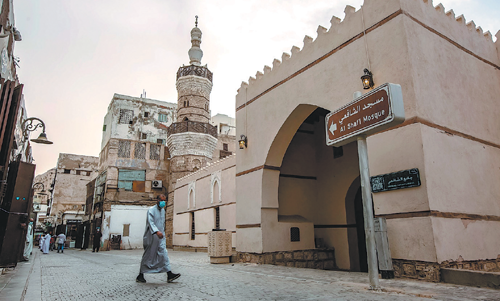

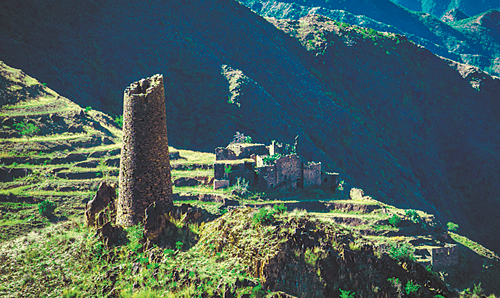
Today's Top News
- China's new plan, world's new opportunities
- Expert: US actions, words don't match
- China's diplomacy to blaze new trails
- Visits point way to better future for all
- PLA tests joint combat strength for second day
- Xi stresses advancing rural areas' vitalization
















